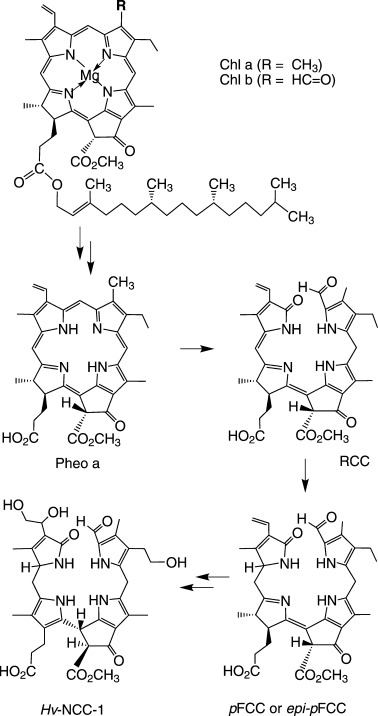1.

Structural outline of the "common" main path of chlorophyll breakdown in senescent leaves and ripening fruit.[13] Chlorophylls are degraded in the chloroplast by enzyme catalyzed processes via pheophorbide a (Pheo a) and the red chlorophyll catabolite (RCC) to "primary" fluorescent chlorophyll catabolites (pFCC, or its C1 epimer, epi-pFCC). FCCs with a free propionic acid group isomerize in the vacuole by an acid-catalyzed reaction to the corresponding nonfluorescent chlorophyll catabolites (NCCs). Hv-NCC-1 is the main NCC in senescent leaves of barley (Hordeum vulgare) and derived from pFCC.[8]
